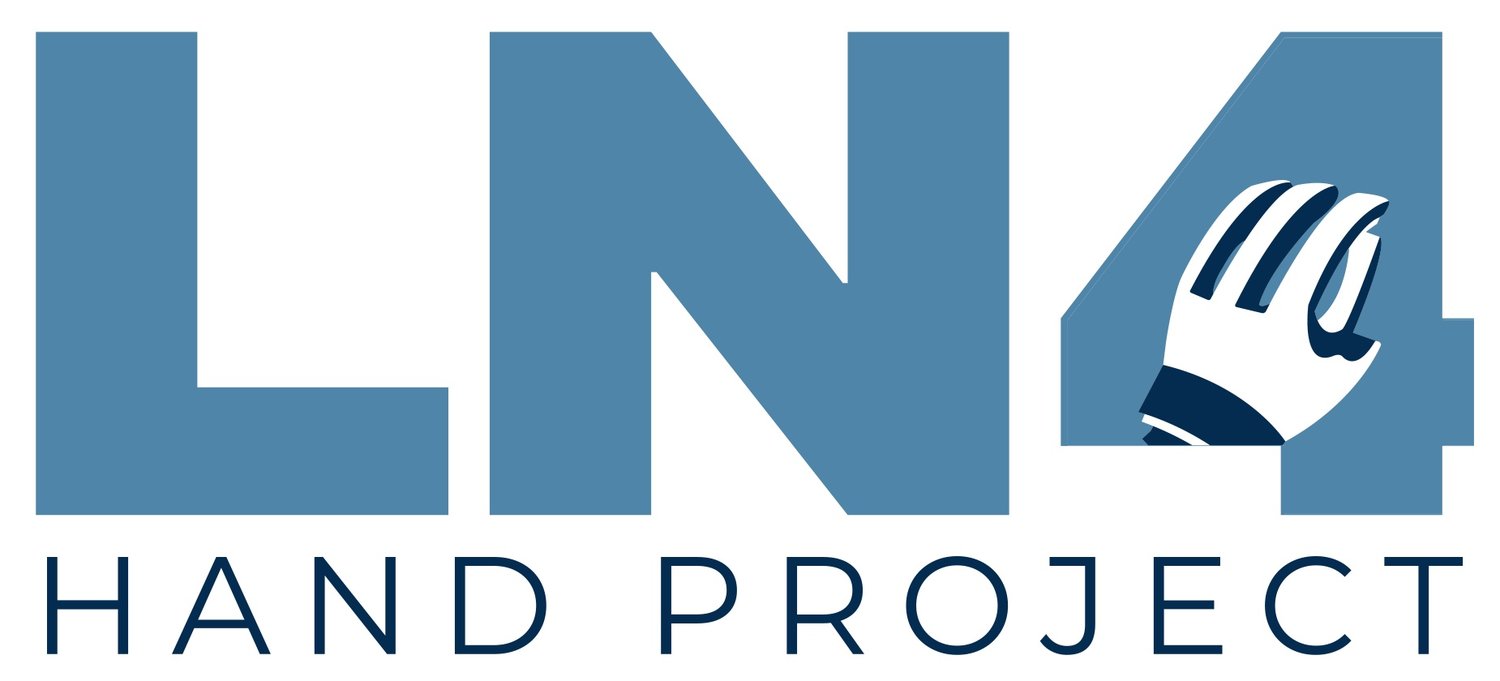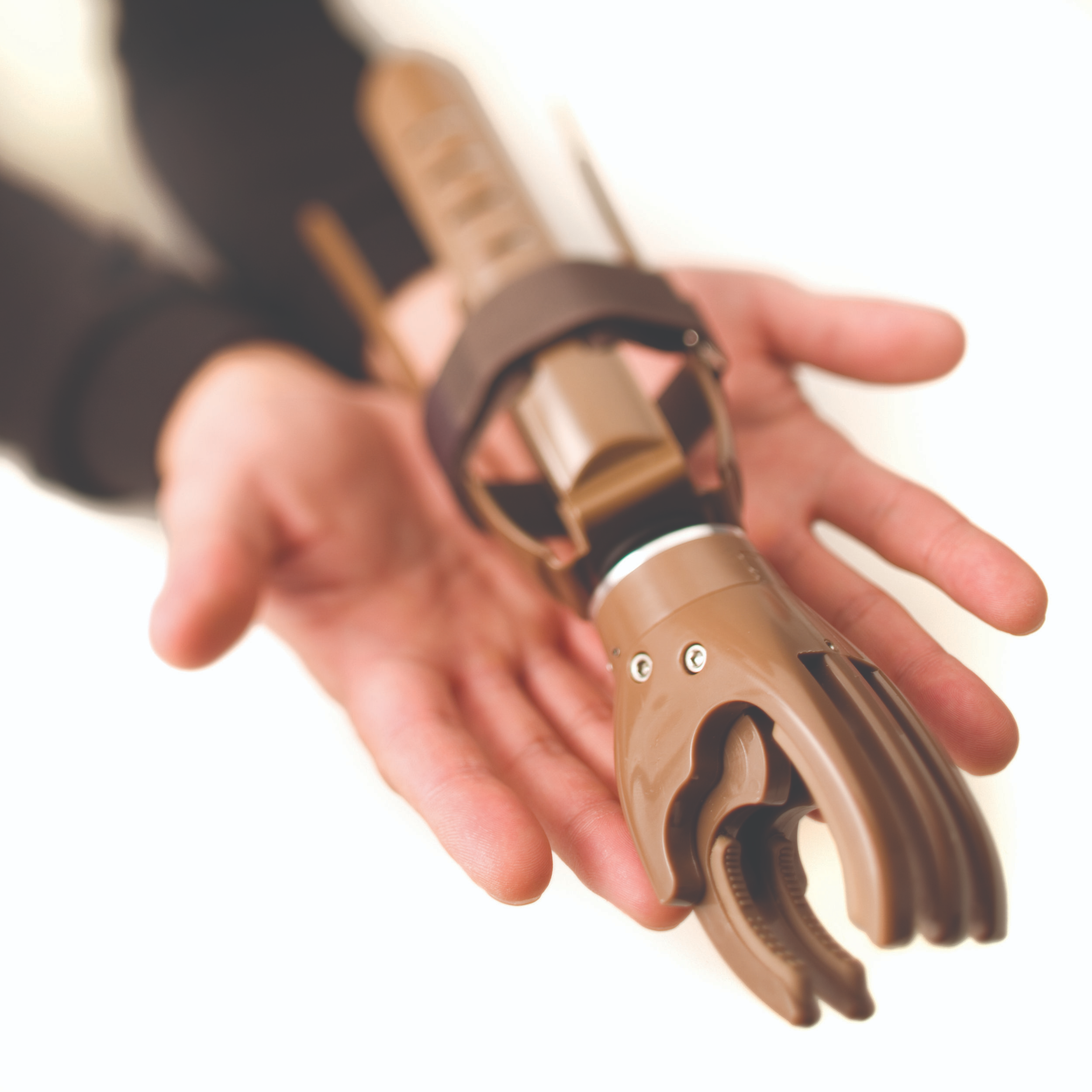About the Hand
Development of the LN4 Hand
The LN4 prosthetic hand is a low-cost, light, durable, and functional prosthetic hand. Ernie Meadows, Michael Mendonca, and Maurice LeBlanc, an award-winning mechanical engineer focused on assistive technology with special interest in upper-limb prosthesis, all worked to develop a hand that could be cheaply produced but maintain a high level of quality.
After several years of testing, the resulting hand was named the LN4 prosthetic hand after Ernie’s deceased daughter, Ellen.
In order for this device to be successful, recipients must have 14cm of residual limb below the elbow to utilize this prosthetic device, measured from the tip of the elbow to the tip of the remaining arm to assure a strong fitting for the cuff. Additionally, there can be no remaining fingers, thumb, or wrist, as these will interfere with the cuff and are likely more useful than the LN4 hand. Finally, the arm should be flexible and fully healed with no open sores or bandages to interfere with the attachment.
While innovative and resourceful partners have developed several “work-arounds” that allow for people who do not meet these criteria to use the LN4 hand, they are usually unique to the clinic distributing the hand.
Instructional Videos for the LN4 Hand
Below, we provide a number of training videos for your perusal. If you have an LN4 hand and require additional information, please contact us and we’ll be happy to assist you.
How to fit an LN-4 hand
Grips and use of the LN-4 hand
How to fit an LN-4 hand (version 2)
Michael Mendonca, our Founder, demonstrates how to fit an LN-4 hand.
Different uses for an LN-4 hand
Instructional video shows how the LN-4 hand can grip items.
Instructional video for grips and use of the LN-4 Prosthetic Hand.
General Info about the LN-4 Hand
Carissa Ryström, LN4 Ambassador Liaison, answers frequently asked questions on the LN-4 hand.
A step-by-step guide on fitting a hand and different methods to utilize it.
Entry into the Smithsonian Museum
On October 8th, 2009, the LN4 prosthetic hand was added to the Smithsonian Museum’s collection for modern technical innovations in prosthesis.
“It makes a strong addition to our collections and our efforts to document the history of prosthetics in America and international entrepreneurial activism to assist people with disabilities.”


